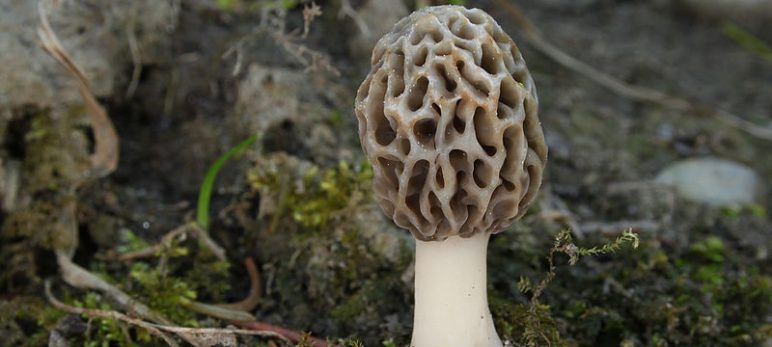Mushrooms’ enthusiasts all over the world on the search for morels
Someone could argue that morels are the “queens” of spring, as during this season they attract the interest of most of the mushrooms’ enthusiasts all around the globe. As soon as the snow in the mountains starts to melt and the freeze of winter weakens, giving place to the milder temperatures of spring, mushrooms’ enthusiasts begin to pay more and more attention to the signs of nature that will tell them the time has come to initiate the quest for their most beloved mushroom, the morel.
Depending on the weather conditions, usually morels make their first appearance in the last days of February in the temperate climates, as in South Europe, while in the cold climates, as in Canada, they start fruiting later in spring until June. What distinguishes morels from other wild mushrooms is that they grow at a slow pace, lasting for about 10 to 15 days. This means that since the appropriate environmental conditions are met for morels fruiting in a region, someone can find them even after 10 to 15 days. Most important, if someone finds one morel, he or she can be certain that there are plenty more nearby.
Morels are edible mushrooms and they are said to be among the most delicious mushrooms. There are many species of morels and mycologists worldwide constantly list even more as the result of their research activities. Species of morels, well known to the public, are the Morchella elata, found in coniferous forests, Morchella esculenta that can be found in forests and grasslands and Morchella conica, also found in grasslands and coniferous forests. Specifically in North America people are familiar with Morchella americana, Morchella capitata, Morchella puncites and Morchella tomentosa. Some other species are found in Asia and especially in China, such as Morchella meiliensis and Morchella deqinensis. Overall, more than 60 species of Morchella have been identified by molecular phylogenetic technics.
Morels, apart from coniferous forests and grasslands can be spotted in oak forests, and nearby elms, castaneas (chestnut trees) and even apple trees. Morels seem to present a preference on fruiting under dried trees, and in burned forests. Those who hunt morels, especially those who do so for profit, are aware of that preference and every spring they visit recently burned areas to search and pick morels. Of course, everybody should have in mind that the catastrophic consequences of a burned forest are far more important than the pleasure of morels’ picking or the temporary profit. Mushrooms’ pickers should respect nature, protect and cherish the natural environment and this is what they definitely do.
The team of Mushring.com, acknowledging the increased interest of people on morels, aspires to develop a forecasting tool especially for morels’ fruiting which will not only give information about the time and place of morels’ fruiting, but also about the time period that they can be found.
Check out the *NEW* Mushring Probability Model (MPM) forecast maps for wild mushrooms fruiting



